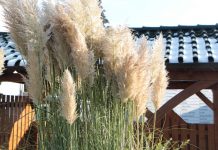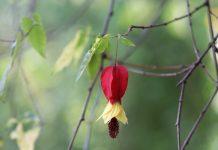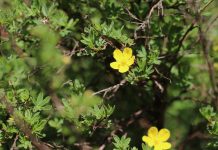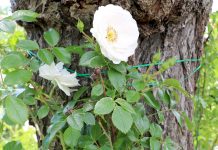The colour of the Liatris spicata, which blooms in midsummer and has its origin in North America, moves in the gentle spectrum between purple red and white. The dense blazing star is a magnet for butterfly’s it is extraordinarily rich in nectar. It is always a highlight with its slim, spicated blooms above grassy leafage, which are normally surrounded by a swarm of moths.
Plant Profile
Contents
- plant family: Compositae (Asteraceae)
- genus of the worts: Liatris
- breed: eared Blazing star (Liatris spicata)
- trivial name: Gayfeather, eared Blazing star
- origin: North America
- modest herbaceous perennial
- growth height: 40 to 100 cm, blossoms sometimes higher
- blooming period from July to September
- spicated inflorescence in red, purple, violet or white
- deciduous, grassy leaves, rounded to elongated rhizomes as an organ to outlive
- decorative or cut flower for pot or bed
It is a scenic view when the spicated flowers of the dense blazing start open. The intense purple-red flowers gently swing 100 cm or more above the ground, always surrounded by a swarm of butterflies. The stems disappear beneath in a sea of grassy leaves that emphasise the sleek appearance of the pedicels.
The Liatris spicata originally comes from North America. The plant is well suited for cozy garden enthusiasts, because it barely makes demands and remains green until almost the first forst.
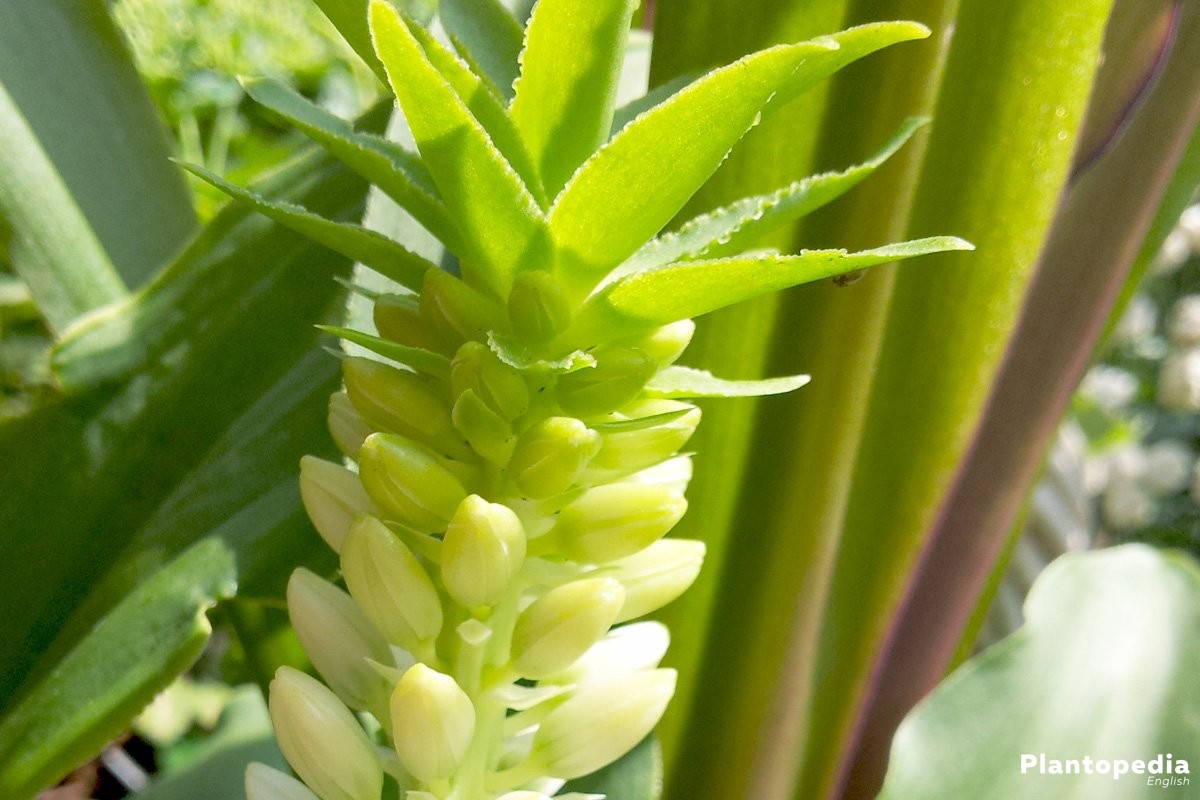
The flowers of the Gayfeather are merely slowly opening top down. A fine, long-lasting ring of hair appears at first which is quite typical for Asteraceae. After finish blooming of the single flowers, the fruits are formed which look as individual small nuts with a size of approximately 6mm quite apart. In their native North America the Liatris spicate delights in sunny meadows with its magnificent flowers – in the wild, the plant is still common.
Care
The beautiful perennials with their conspicuous flowers are altogether quite modest and don’t need that much care. However, you should consider some specifics, so that the dense Blazing Star is an adornment in European gardens for many years. The perennial plant in particular imposes a very few requirements to the location, soil and neighborhood.
Location
Since the Gayfeather is at home in sunny meadows, it needs a location that is not shaded, also in the garden. It should be able to spread freely upwards and likes low neighbors. The Liatris spicata needs lots of light. The pedicel are however quite strong (even if they don’t look like), so a little wind isn’t harmful.
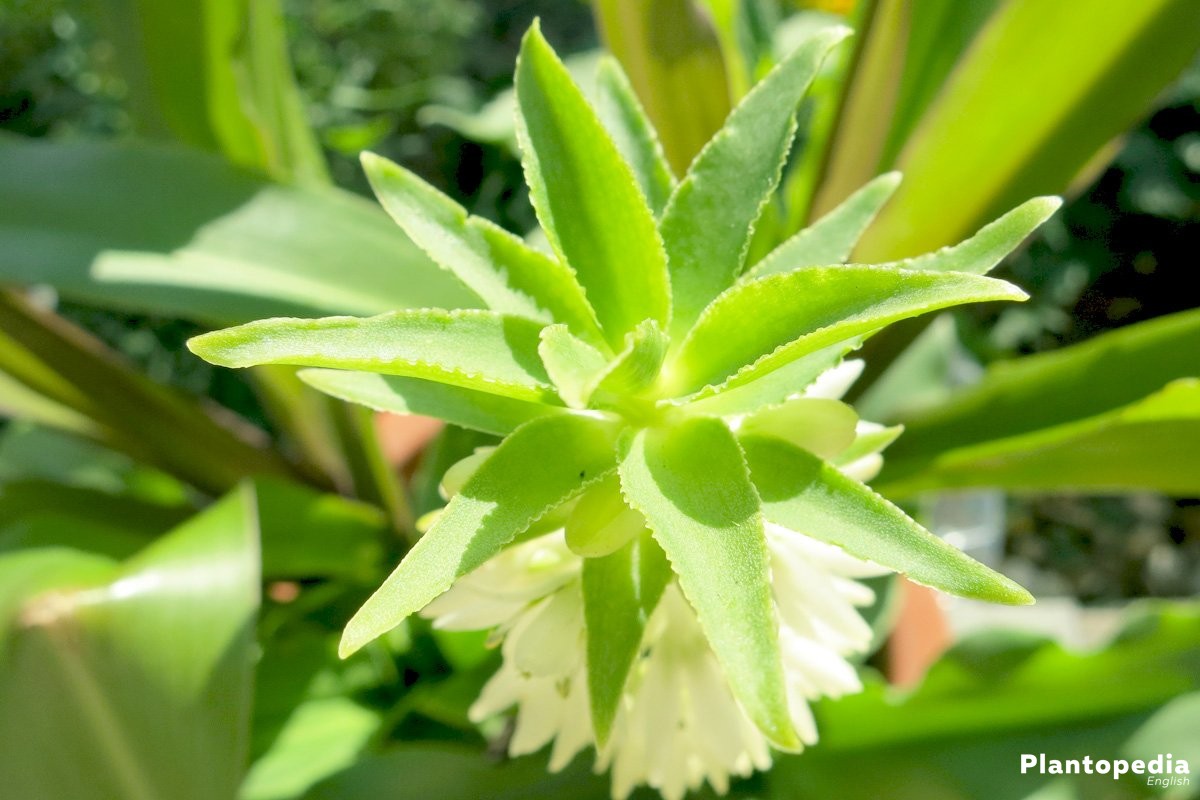
However, it also grows in sheltered places so it doesn’t need the wind. The stems can break off while squalls, so the Liatris spicate should be placed at least slightly protected. The perennial forb copes well with the temperature at local latitudes; it doesn’t require heat protection, nor protection from rain or cold weather.
Soil conditions
The Gayfeather feels comfortable in the flower bed as well as in the herbaceous border or in the pot. In the nature of North America it settles there where it finds sufficient water and nutrients without sinking in the mud.
It needs the right soil to develop its flowers being full of beauty:
- humose, calcareous and nutrient rich soil
- lightly damp
- without waterlogging and well-drained
- fresh garden soil with a little lime addition and compost is ideal
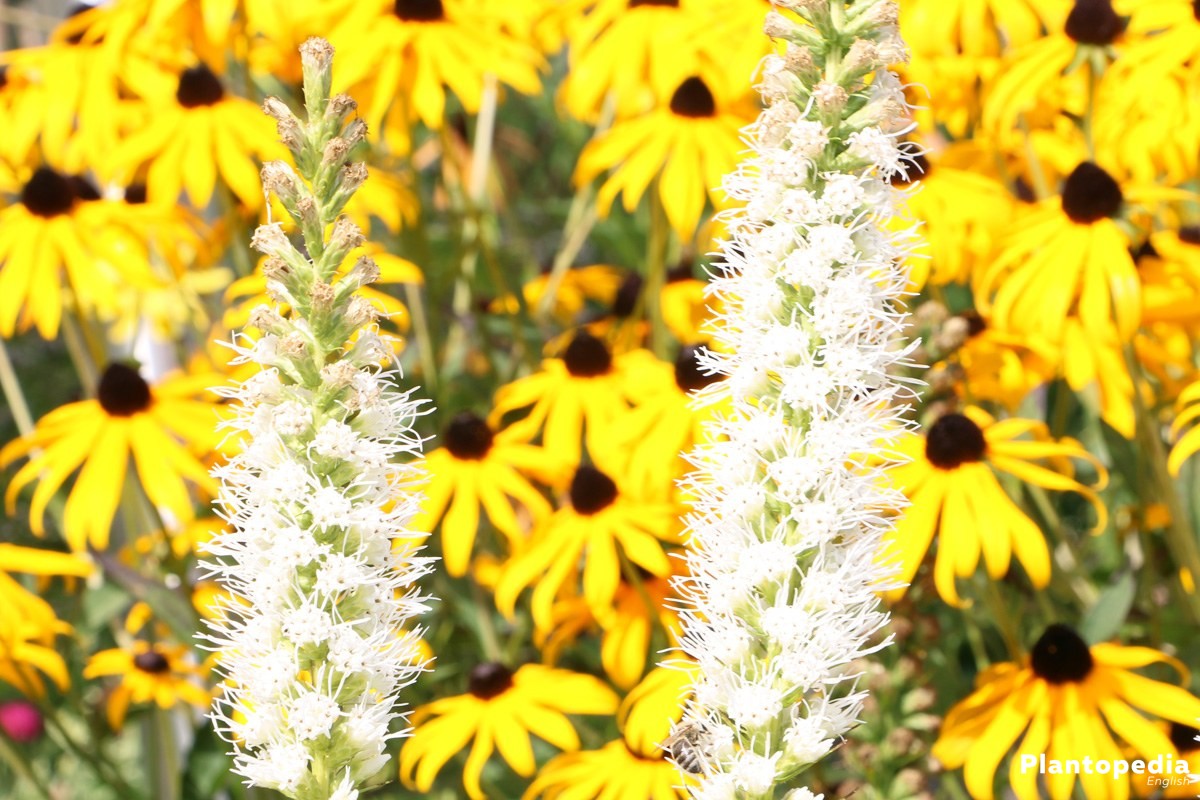
For the Liatris spicata, you should choose a location that is sunny and only slightly moist. The perennial doesn’t tolerate waterlogging as well as nutrient-poor or dry floors. The Gayfeather likes loose soil which is not condensed and still keeps moisture without swamping. A lime-containing soil is.
Substrate
Liatris spicata can be kept in the outdoor as well as in a bucket. It loves lavender, roses and mint as neighborhood. It doesn’t like fir, pine and spruce because they can leach the soils too much. In general, the distance to adjacent plants should not lie below 15 cm. As a substrate, normal flowering soil is well suited. In the bucket like in the outdoor, the Gayfeather may hinge it when the soil is mixed with some lime and compost.
When it is planted in a bucket, it is particularly important that excess pouring water can drain. Because the Gayfeather does not tolerate the standing wetness. A high groundwater level is not so good either, in this case the perennials should not be held outdoor, but in a bucket. The substrate should not be sandy in any case.
Planting time
If the Liatris spicata is not sown directly into the bed, it should definitely be planted in the frost-free soil from mid/end of May. Because the young perennials don’t tolerate frost well. The Gayfeather doesn’t like wet roots. If you want to deploy the plants in a place with a high groundwater level, a drainage of clay potsherds, pumice or gravel is useful.
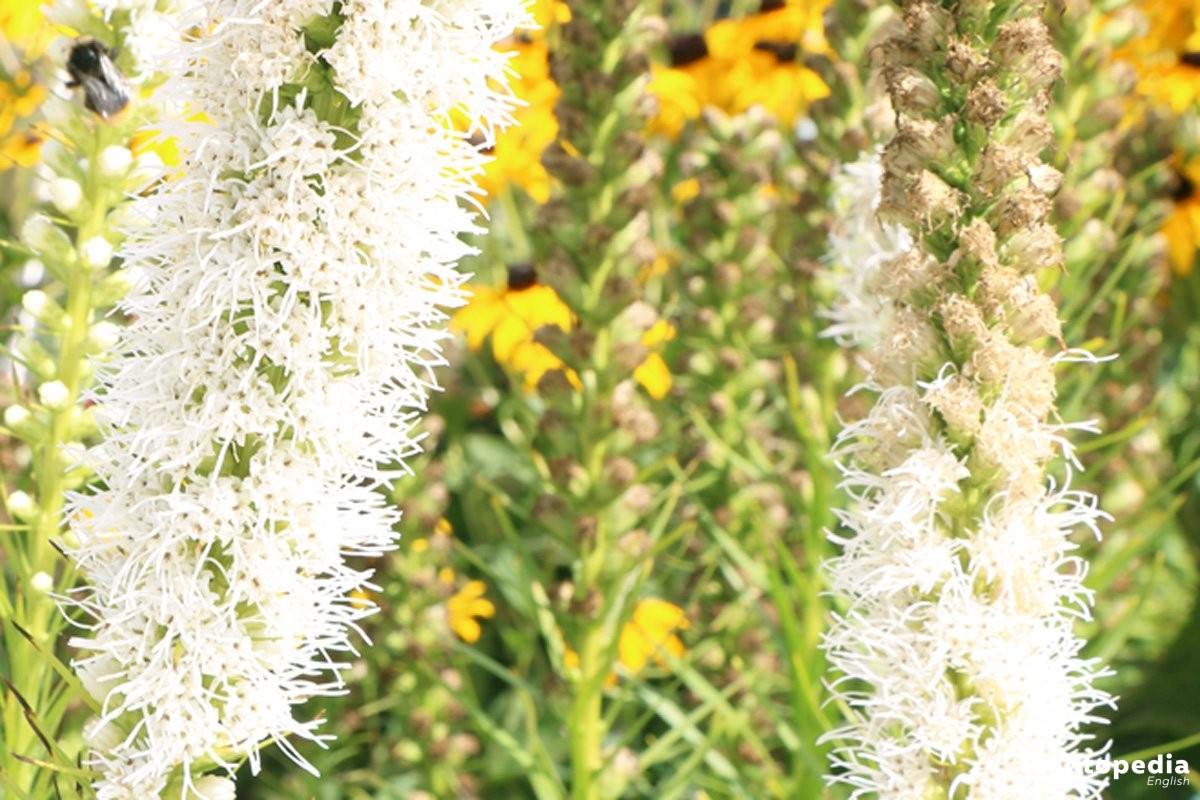
Planting in the Bed
Liatris spicata can be sown in the bed, but also grown as a young perennial there. The perennial takes extraordinary apart into small groups of three to five plants from rose, lavender or Mint. As for direct sowing, the ground has to be prepared carefully. In the meantime the Gayfeather should suck full of water in a bucket.
These steps proceed properly:
- loosen the bed soil thoroughly with the rake
- weed weeding, remove roots and stones
- lift a large scale planting pit in a distance of 20-30 cm
- mix the excavation in a bucket with some horn meal and compost mixing
Press the soil on well with your hands. The planting in the bed is rounded off with a well measured dose of soft pouring water.
Planting in the pot
If the Gayfeather is going to be planted in a bucket, it should have a large enough volume as well as a drainage hole for excess water. A drainage made of coarse, mineral material is very useful. If you cover the drainage with a garden- or weed-fleece, leaking soil drained down with water can’t clog the drainage.
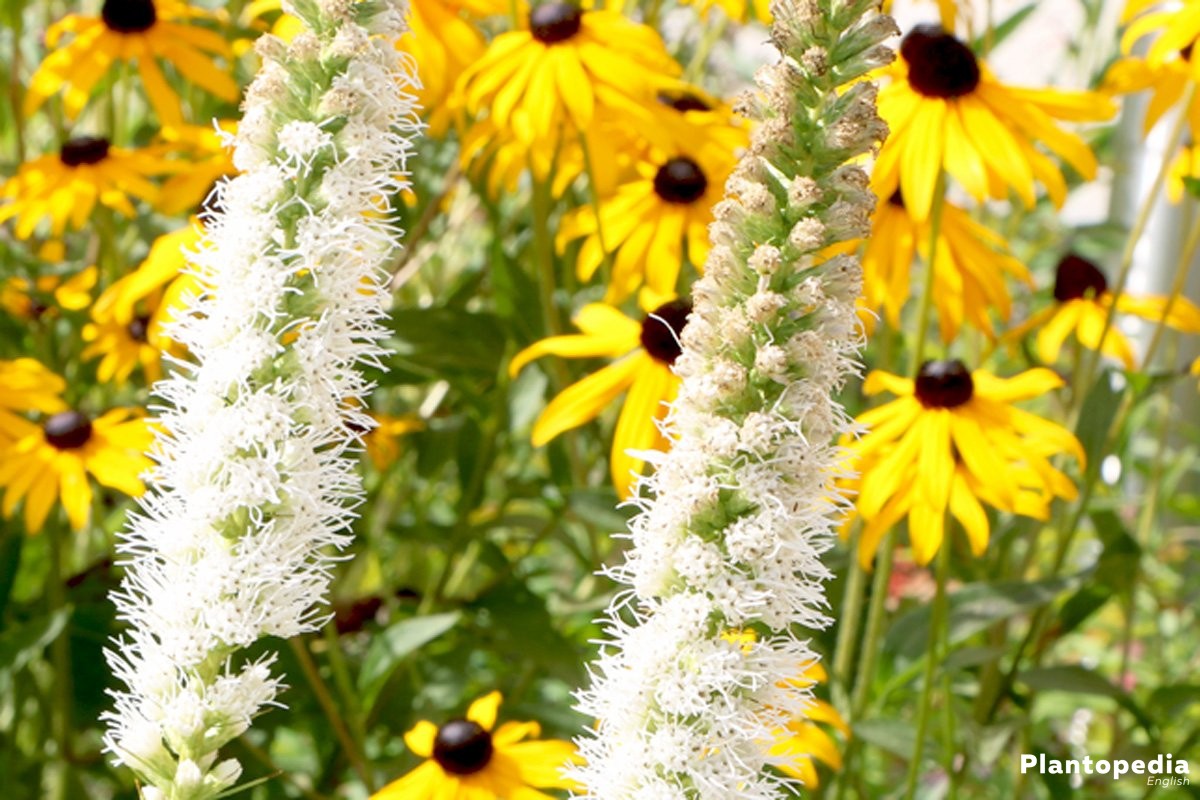
Therefore, for the cultivation in the pot the potting soil should be mix with up to 25% perlite. The volcanic material serves to conserve the moisture and prevents any waterlogging.
When planting, proceed as follows:
- fill in the drain
- put the fleece in place above
- fill a first layer of mixed soil above the fleece
- slightly press the tuber of the Gayfeather halfways
- fill the other substrate
- press on the soil well
- water with soft water
- remove the water from the possibly existing coasters after watering
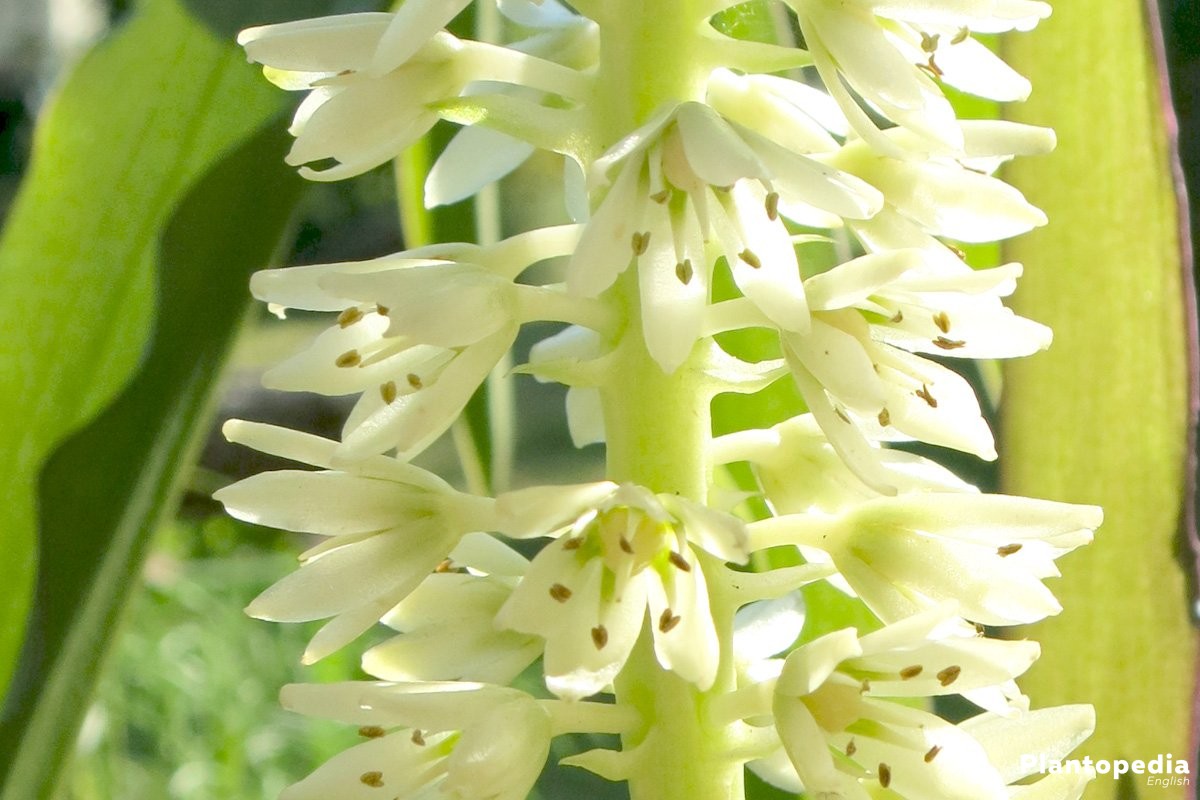
Watering
The dense Blazing Star requires a large amount of nutrients and water so the beautiful little flowers open up in hundreds along the ears. So, regular watering is important. But it shouldn’t be over watered at it because it doesn’t tolerate waterlogging. So the plant shouldn’t dry out, but also shouldn’t be too wet. This can be accomplished with a thin layer of milk: the mulch covers the ground around the Gayfeather and keeps it moist and warm.
Fertilizing
The Blazing Star should be planted in a substrate mixed with some lime or horn meal and compost in the open field or in the bucket in a mix of potting soil and perlite. During the growing period it can be fertilized with horn meal and compost. But from August, Liatris spicata should receive no fertilizer any more.
- in the bed rake up the compost slightly in the soil every 2 weeks
- in the spring, the Gayfeather of should get a complete fertilizer if is not fertilized with compost
- should be then fertilized with a fertilizer for flowering plants every 14 days
- generally it’s good for the dense Blazing Star if the soil around the plant is regularly mulched with grass clippings or leaves
- Liatris spicata fertilized with compost also need a complete fertilizer once in a while
Cutting
The Gayfeather flowers once a year. You can perhaps persuade the plant to develop a second, slightly lower flower if you immediately cut off the flower stalks after flowering from directly above the foliage. However, this is also dependent on the weather conditions and accordingly it does not always work.
In the early winter, you can then cut the Liatris spicata of close to soil, because the plant withdraws completely into the root ball. The cut is not important for the plant, which can overwinter with foliage. You shouldn’t mind wilted leaves and stems in your perennial border, but don’t harm the plant with the cut also.
Hibernating
You don’t need to do something to hibernate the Liatris spicata. The plants are ready for winter and perennial. You can remove the wilted leaves and the stems if you don’t like the sight in your bed or in the bucket. Generally it doesn’t hurt the perennial but also, if leaves and stems remain in the winter off. The plant hibernates in the root ball.
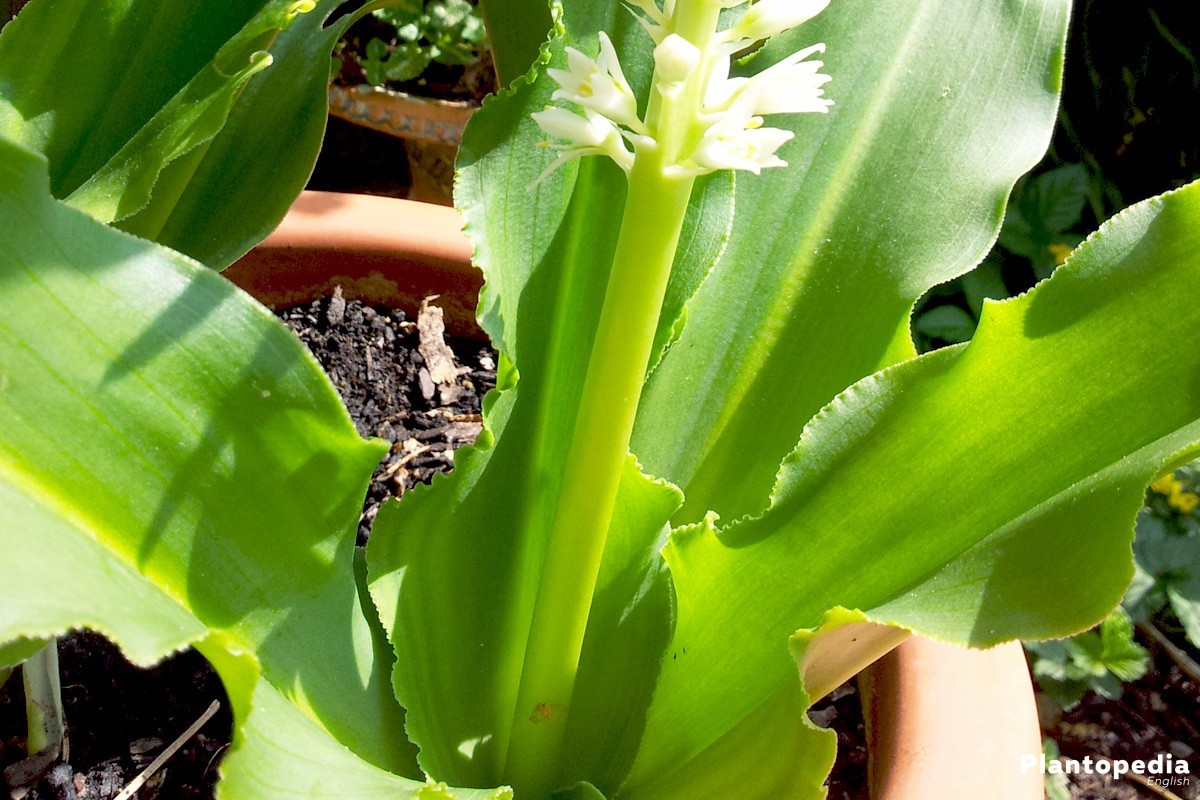
It is something different is if you keep the Gayfeather in the bucket. There the Gayfeather absolutely needs a winter protection. Place the bucket on insulating material, such as styrofoam or wood. Wrap the pots with a garden fleece, with bubble wrap or raffia ribbon. The perennials should be cut back to about five to ten centimeters and covered with leaves or straw. You don’t need to drag the plant in a winter quarters. Better air the covers when the temperatures rise so that no mold can form under it.
Breeding
The Gayfeather can be breeded with its seeds or with the segmentation.
Segmentation
Liatris spicata forms spherical or elongated rhizomes in the soil, making it highly suitable for propagation by segmentation. This should happen at best in the spring after the ground frost. Dig out the entire plant. With a sharp knife or a good sod, you can separate the rhizomes. Then, each half is dug at its new site and watered with a good sized swing of soft water. Experts recommend, by the way, splitting the Gayfeather every four or five years to keep vital the plant.
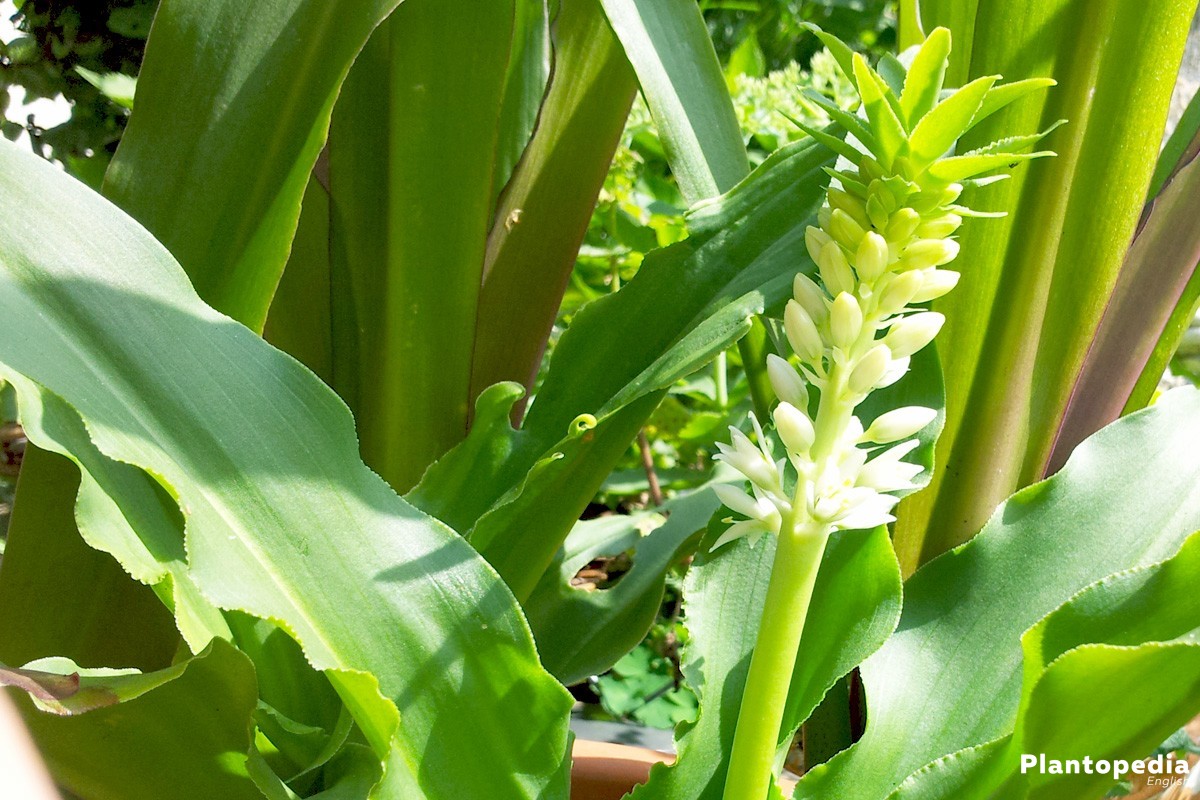
Seeds
Latris spicata forms small nuts after flowerings, which contain a lot of good seeds. Collect the seeds, and then you can multiply your Gayfeather with it. This works either as a direct sowing outdoors or as growing in the House. The seeds should be kept cool, dark and dry in the winter.
In the spring you prepare the soil outdoors, as described above under the passage “Plants in the bed”. However, the seeds must be covered only by a thin layer of substrate. Keep the soil loose and free of weeds until the seeds germinate.
For the cultivation in pot, proceed as follows:
- fill small pots with low-nutrient potting compost
- the seeds are inserted as a pair into the pots, in the seed tray with sufficient distance
- pre-water with lime-free water and put over a transparent hood
- cover thin with soil and sprinkle with some lukewarm water
Germination occurs quickly at a temperature of 18 ° C. It’s going to be faster in the growing vessel if the bowl is covered with foil or a glass. A mini greenhouse for the windowsill is ideal for the cultivation of Liatris spicata, because here a good, warm humid climate can develop. However it must be aired regularly to prevent mold growth. If two seedlings spread close to each other, the weaker one has to be removed.
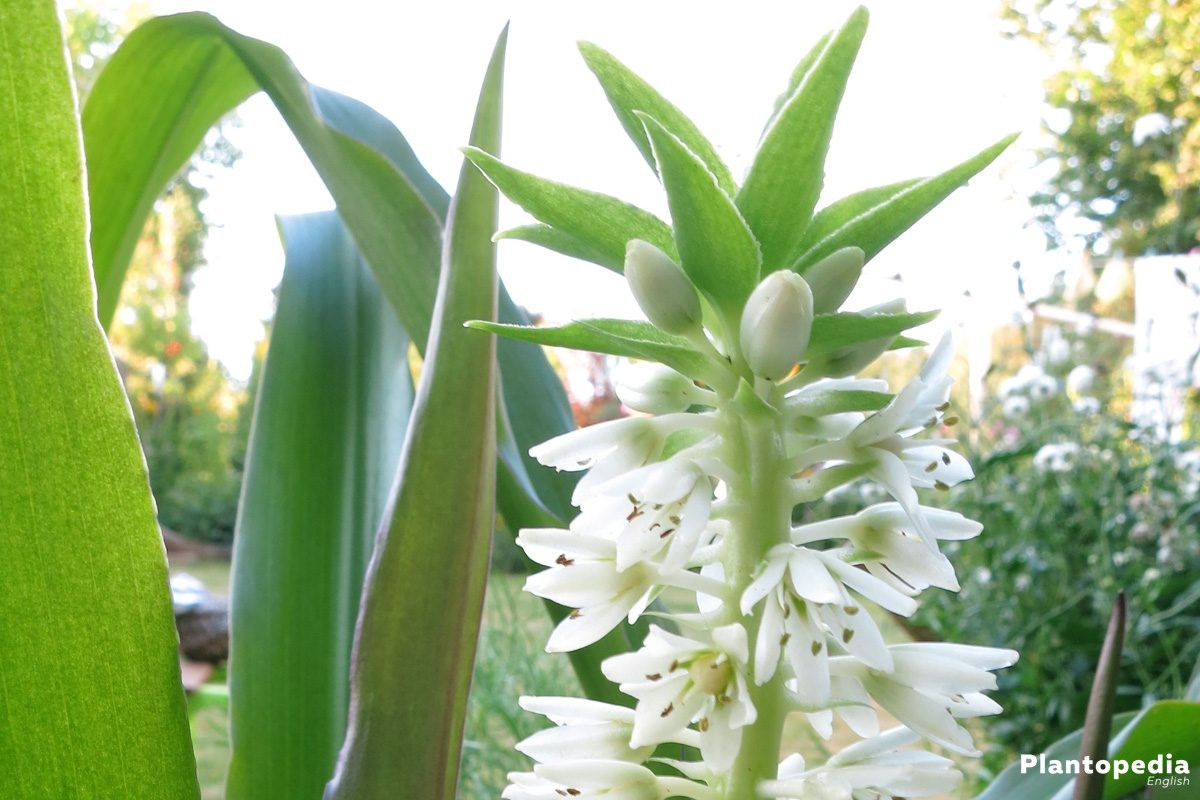
Diseases
The Gayfeather is not prone to pests or diseases, but on the contrary very resistant. Only if the site is not well chosen, or the soil is unsuitable, Liatris spicata will have a rather sickly existence. A too shady location, for example, leads to a just brutish developed flower, too little sun, the plant may even shrink. This also applies to a too moist soil, nutrient poverty, waterlogging and too dry or tight soil.
A few flowers, withered, dry or discolored spots are a sign that it’s something wrong the plant. Mostly, it’s because that not enough minerals and nutrients are available to the Gayfeather. Waterlogging, however, leads to rotting, the plant is wilting, and getting greasy, it stains from top to bottom. A too wet held Gayfeather can be saved as long as the root balls still are not affected by the rotting.
All rotten parts must be carefully removed and the plant must be planted in dry, permeable substrate. Do not dispose the rotten parts please on the compost. Because there the in the process of decay involved fungi and bacteria would even find more food.
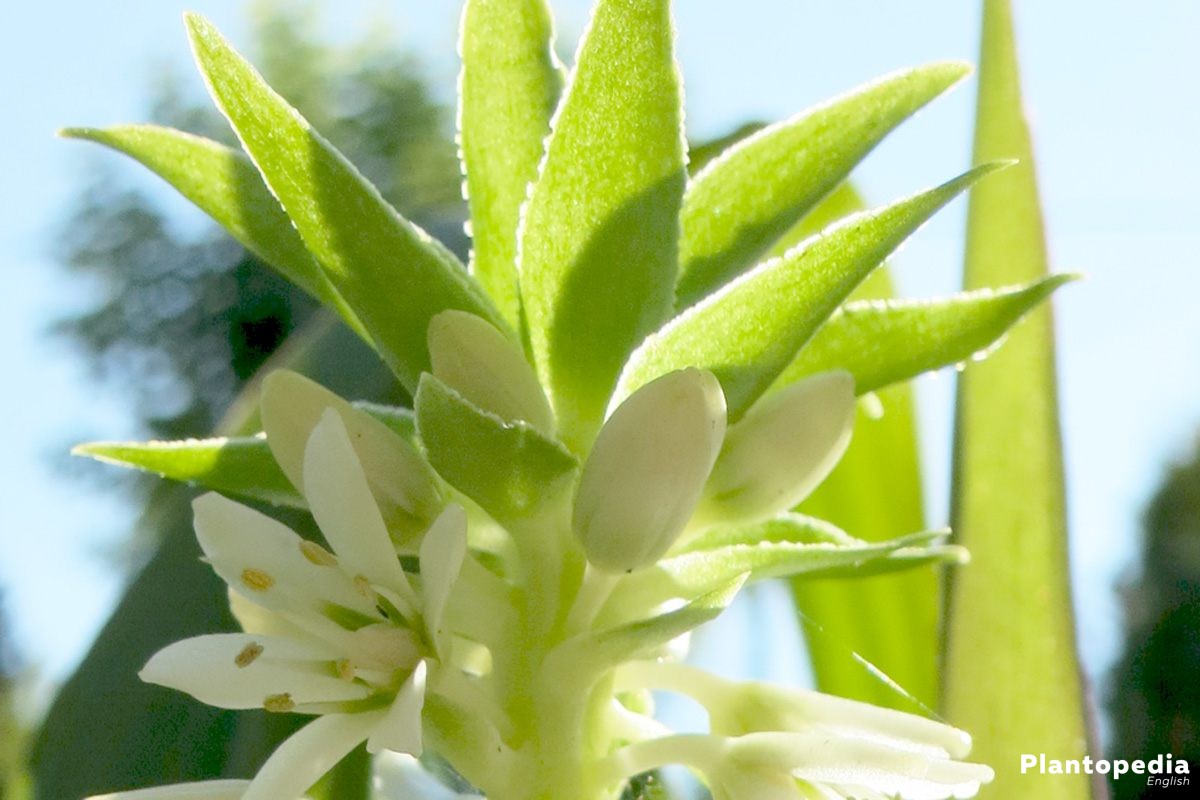
Pests
The dense Blazing Star can’t be impressed by any pests, it is resistant. But the plant almost magically attracts butterflies, bumble bees and bees with its magnificent flowers and these bring pollen.
If you suffer from hayfever or react allergic to the venom of bees and other stinging insects, Liatris spicata is maybe not the right plant for your garden. But the plant itself is non-toxic. You shouldn’t feed them anyways to Guinea pigs or rabbits, because large amounts of leaves can cause digestive problems.












